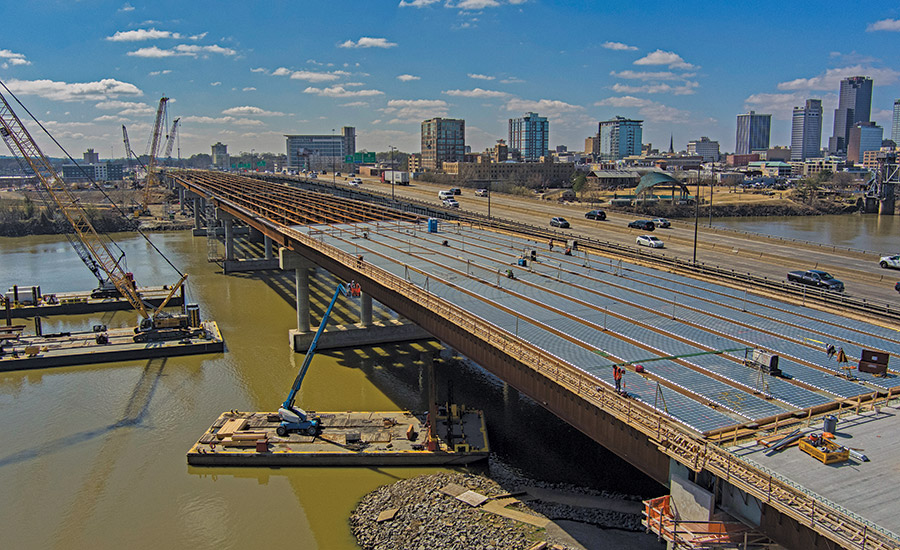Related Link:
ENR Texas & Louisiana Top Design Firms 2023
In the coming year to 18 months, engineering and architectural firms in the Texas & Louisiana region will continue to face multiple challenges related to attracting staff and high material costs. Perhaps the biggest issue facing the engineering sector is meeting demands due to the constant shortage of workers and high turnover. For years, the industry has witnessed a smaller and smaller labor pool. Deloitte forecasted recently that the engineering and construction industry “remains significantly short of skilled workers, further exacerbated by a tight labor market.”
The report continues, “With rising inflation and a tight labor market, companies may have to raise wages and expand benefits to attract and retain employees.”
This isn’t surprising to industry veterans.
“Our clients are seeing retirements increase at an unprecedented rate, which means they’re losing institutional knowledge and manpower. And graduation rates for engineers are basically flat,” says Tricia Hatley, Freese and Nichols executive vice president.
Jerry Holder, director of enterprise at Garver, agrees, stating that firms “will face challenges building staff due to engineer availability.”
An area where the staffing shortage could prove to be especially challenging is government projects, which often involve large, costly infrastructure construction. The agencies have hefty, well-funded infrastructure programs to deliver, says Joe Kaltsas, marketing director at Kimley-Horn. “The challenge is and will be an adequate agency staff capacity and capability to deliver those programs in a timely and efficient manner,” he says.
Another challenge the industry will continue to experience is higher costs for supplies and labor, along with inflation, which has delayed the implementation of some projects. This has some owners turning to a megaproject approach along with collaborative delivery strategies to control costs, Hatley says. But Freese and Nichols isn’t seeing projects get canceled,.
“We’ve seen delays. But with most public infrastructure projects, owners don’t have the luxury of not doing them,” Hatley says.
Inflation hit a 40-year-high in 2022, causing the cost of must-haves in the industry to jump significantly—from plyboard to purchasing and renting equipment to labor costs. While the good news is that inflation is deflating a bit across the board, construction material prices are elevated and most likely will continue to remain high.
One area of engineering that could face a harder time, says Hatley, is infrastructure. Project owners will likely continue facing challenges, including a tight labor market for qualified engineers and construction contractors.
Hatley suggests changing the focus. “So, the conversation needs to center around different approaches: augmenting teams with those offering diverse skills, training up your own technical talent and having flexible work policies to retain your current labor force,” she says.
Additionally, Hatley says the industry must figure out how to harness the benefits of technology.
Technology can provide “a lot of great tools that will allow us to do our jobs not only more efficiently but better,” she says. In an earlier generation, transitioning from hand drafting to tools such as AutoCAD transformed the industry, she says. “The next revolution is going to take us in a whole different direction.”
Holder agrees but worries about smaller firms. “You have to keep up with technology to compete, but the pace of change is becoming a significant challenge for some firms to afford it. Both trends will impact the bottom line of engineering firms in a negative way,” he says.
Planning and designing for sustainability and resiliency in the face of climate change and cybersecurity threats will require shifting traditional methods to a problem-solving approach.
“We’re trained to base our design decisions on historical data. What happened in the past is no longer a good predictor of what’s going to happen in the future,” Hatley says. “Going forward, we will have to test scenarios and communicate the issues effectively in order to help owners make sound decisions. It requires a different skill set from our traditional engineering training.”

A completed project by Garver allows for better lighting at Love Field in Dallas, home of Southwest Airlines
Photo courtesy Garver
About The Ranking
While challenges continued to impact design firms working in Arkansas, Louisiana, Mississippi, Oklahoma and Texas, 2022 proved positive for many engineering and architectural firms.
For example, the 50 largest firms on this year's Top Design Firms ranking posted combined revenue of $7.28 billion, well up from last year’s total of $6.32 billion. The Top Design Firms section ranks firms by revenue in the past year and includes information about those firms’ largest projects to start in 2022 and the most active sectors for those firms last year. The ranking is followed by breakout charts that list company revenue by state, project sectors and work disciplines.





